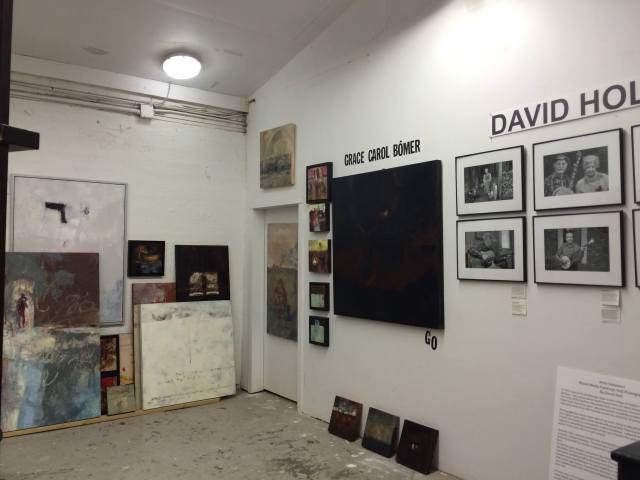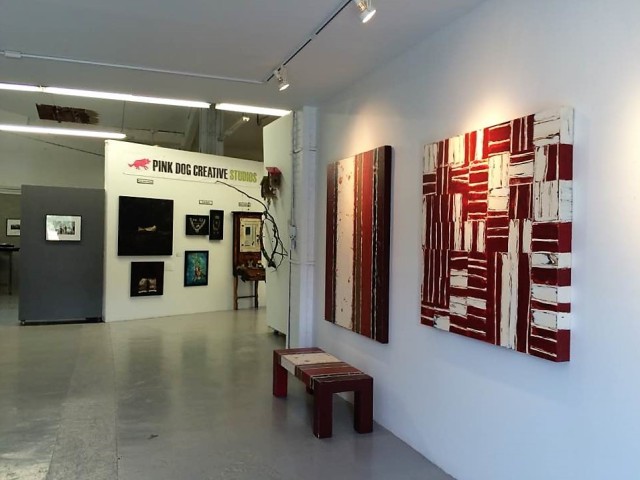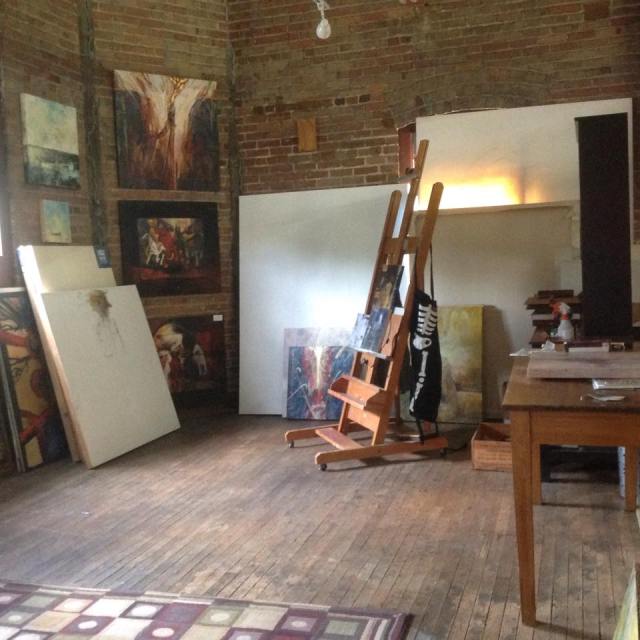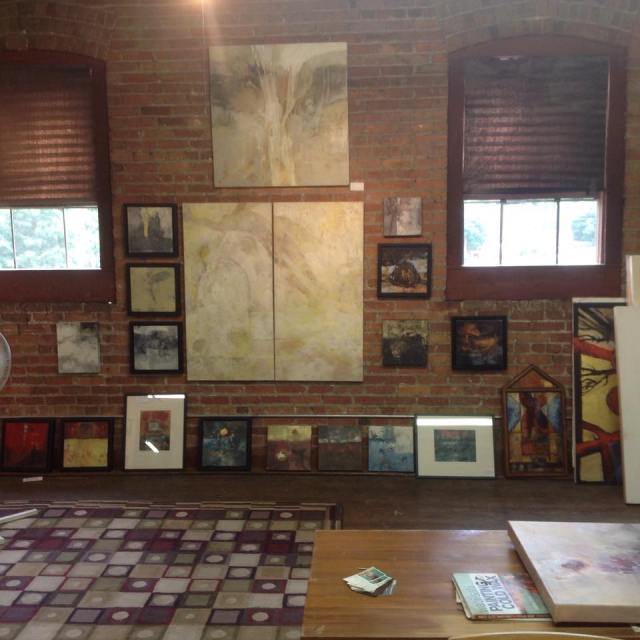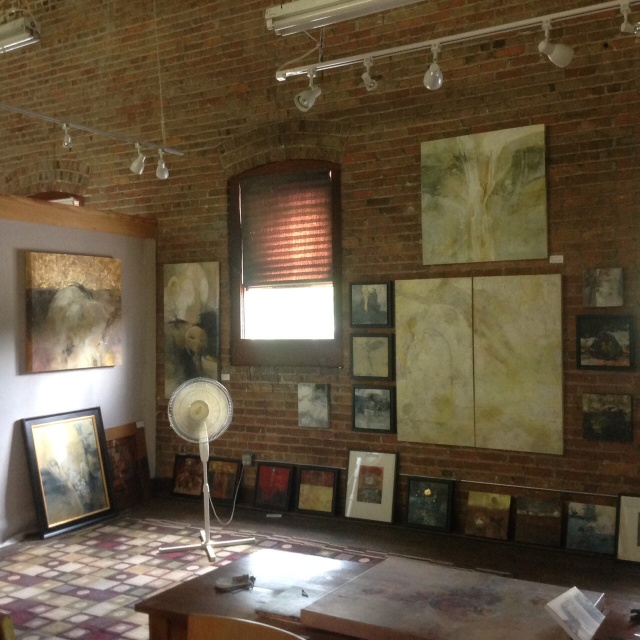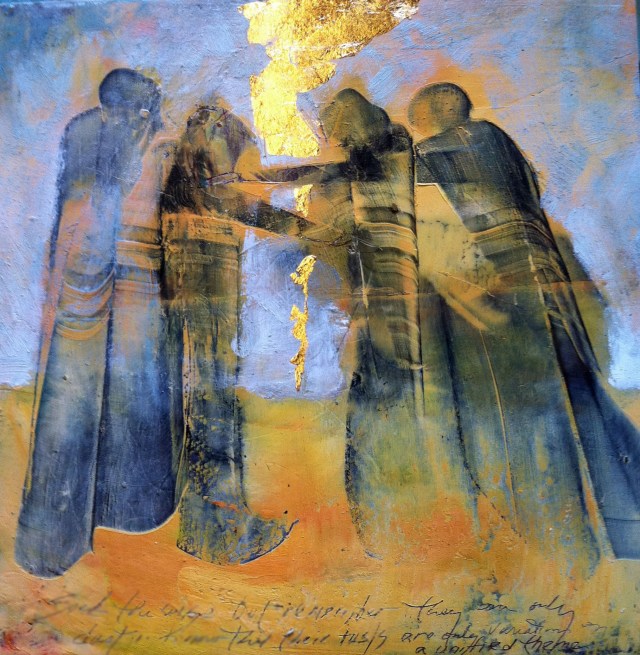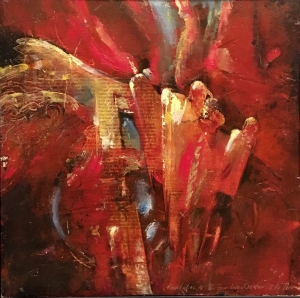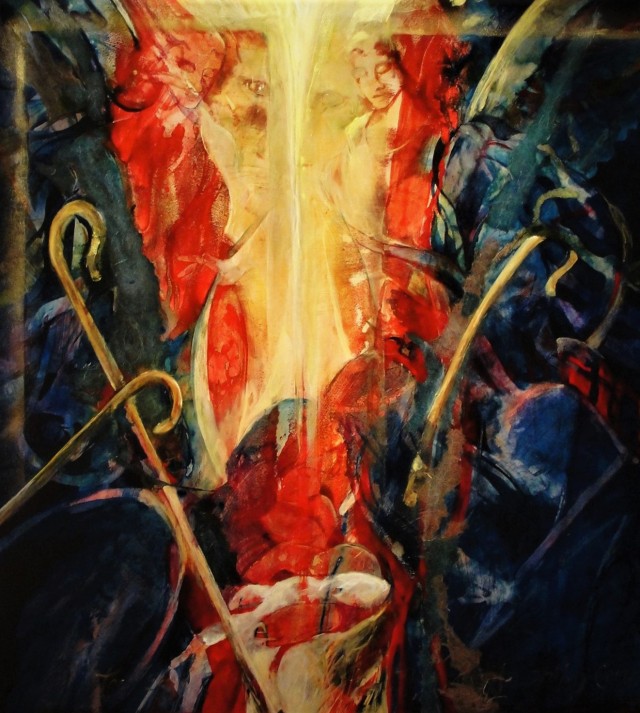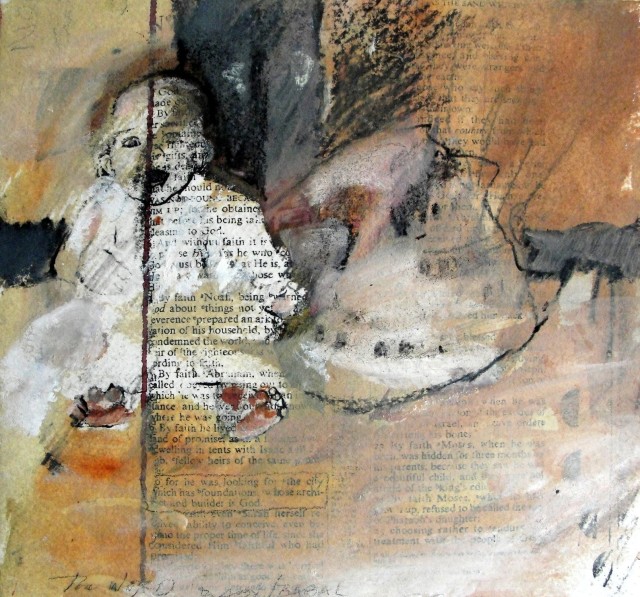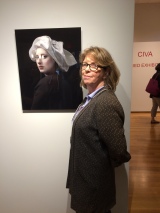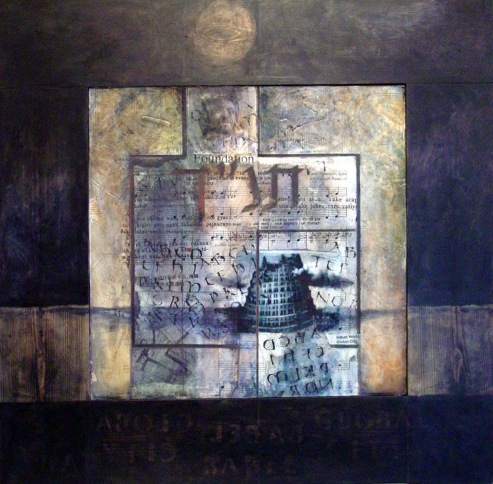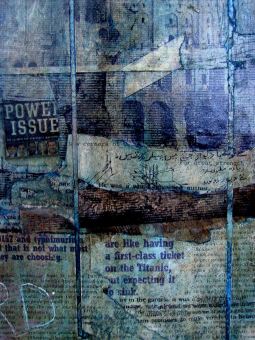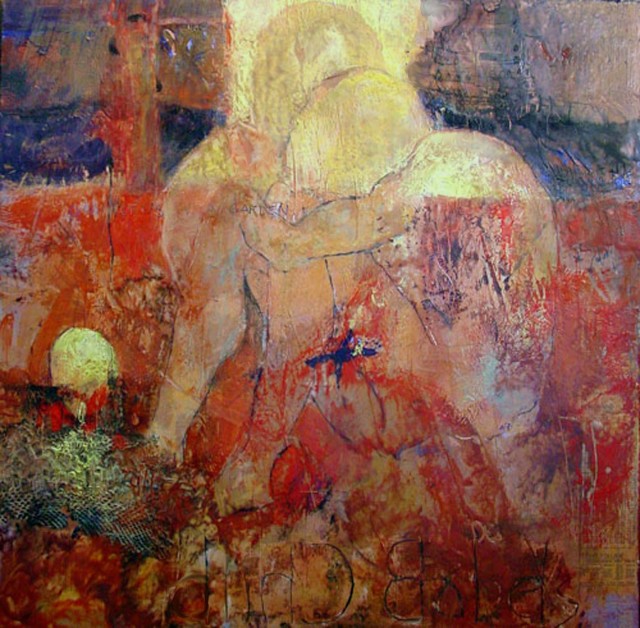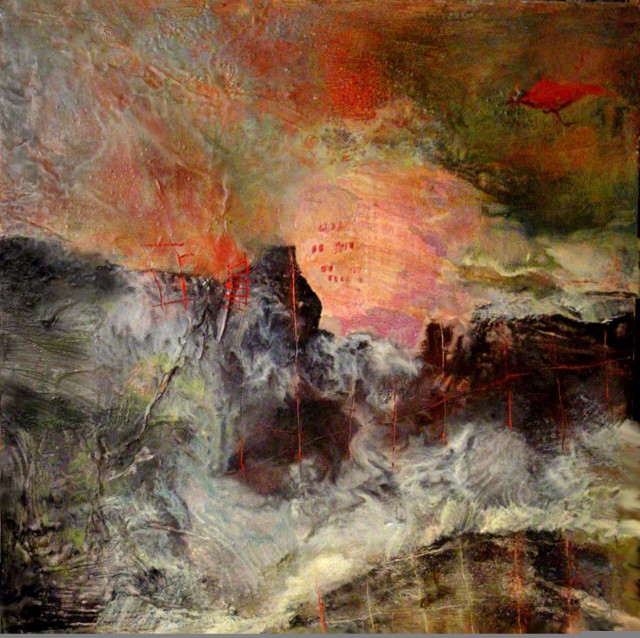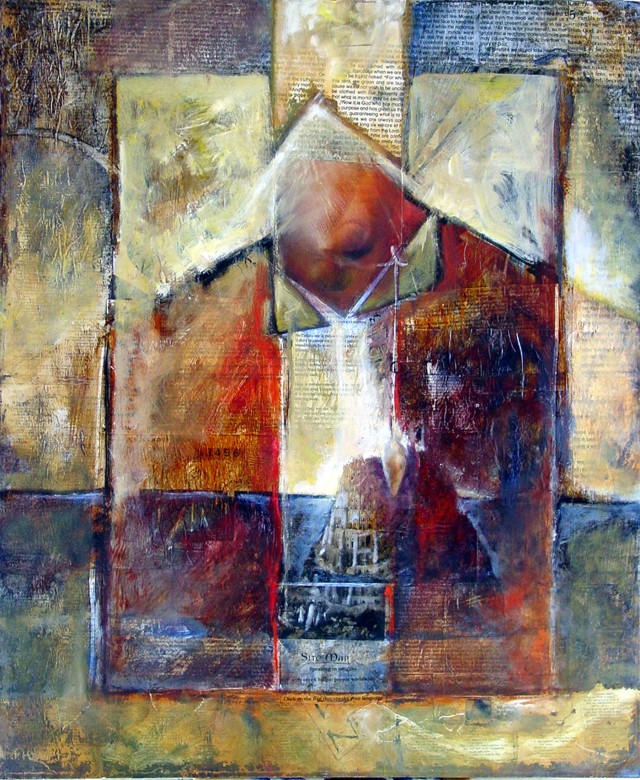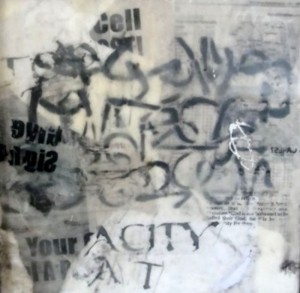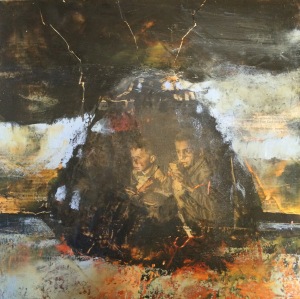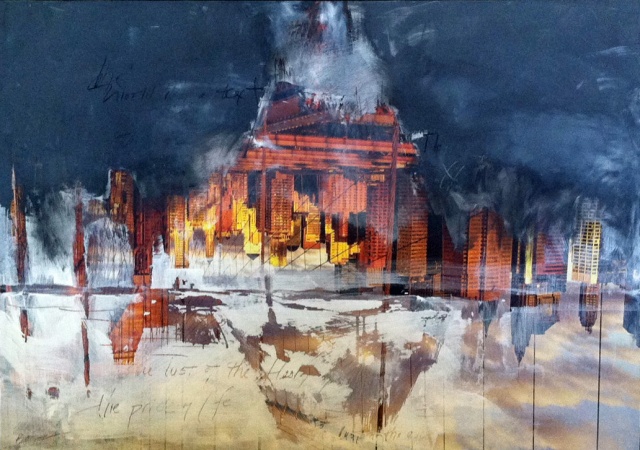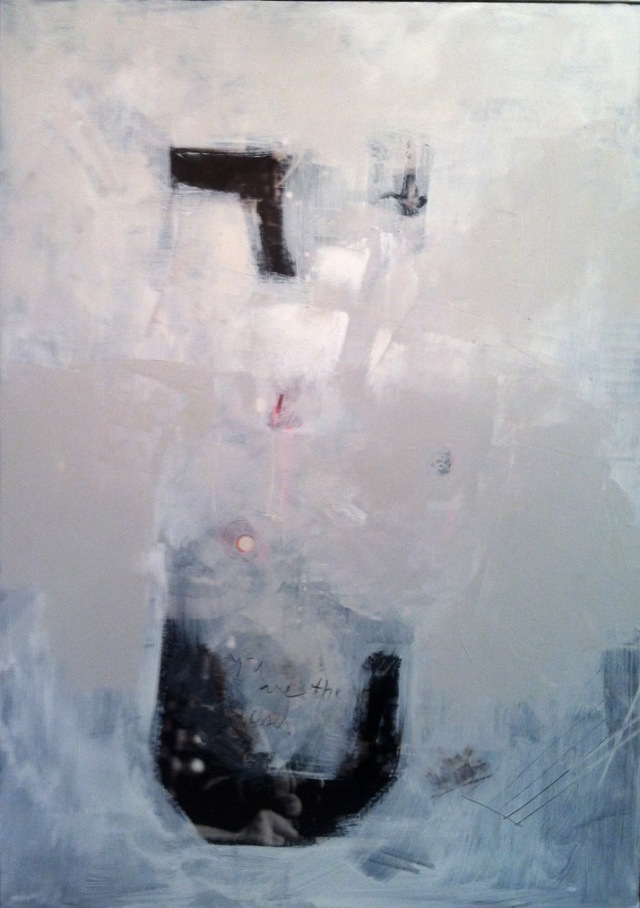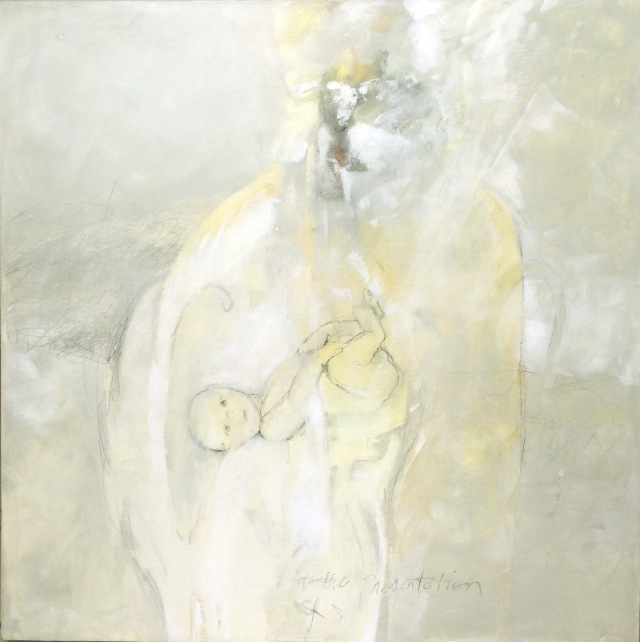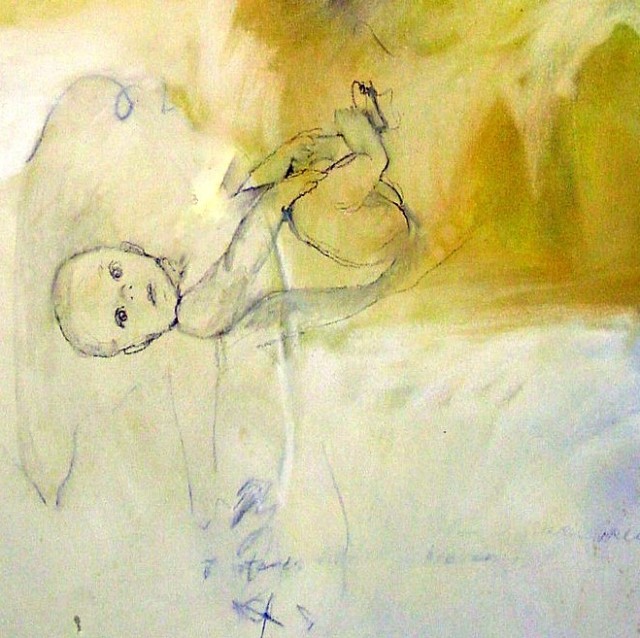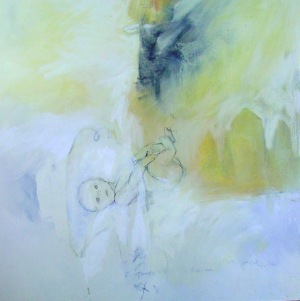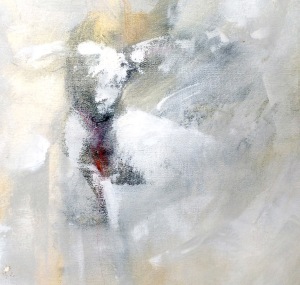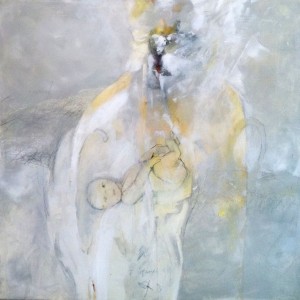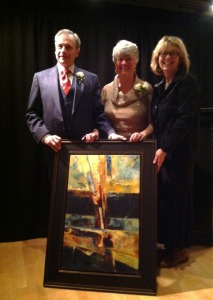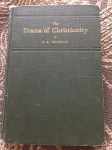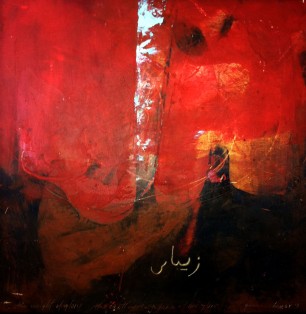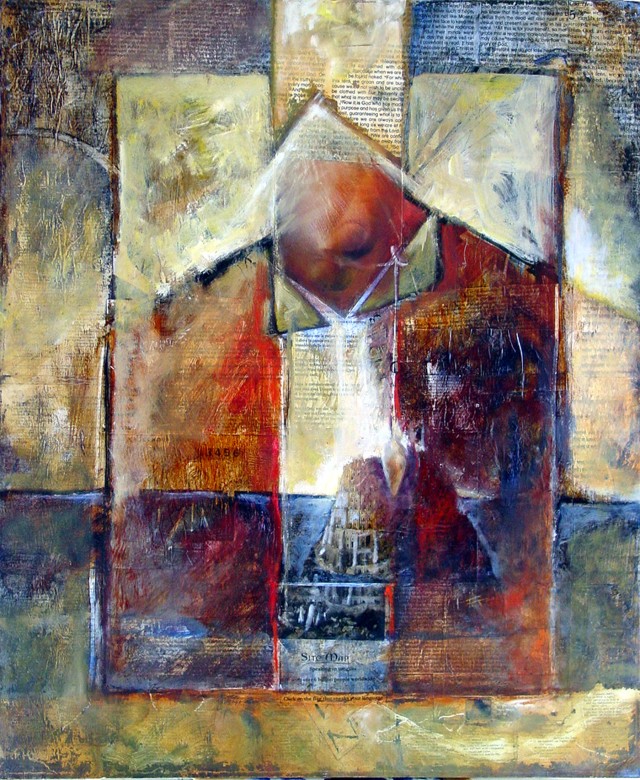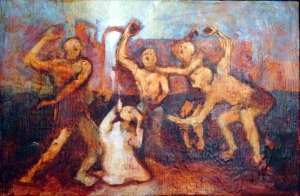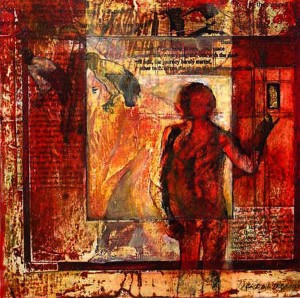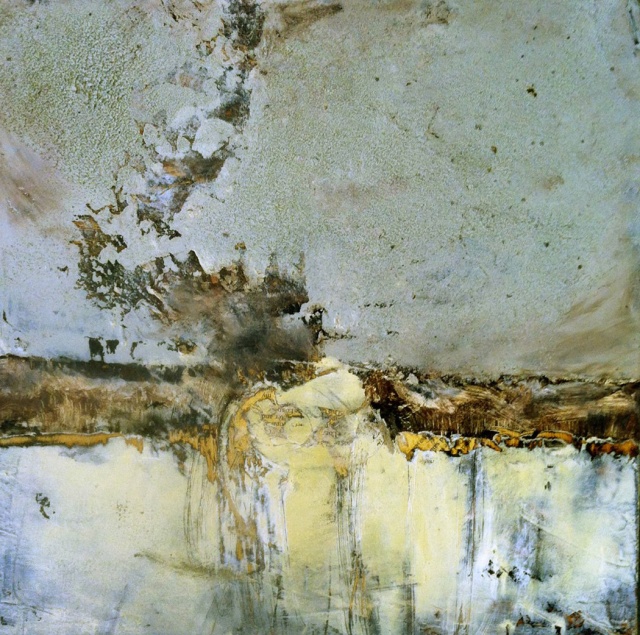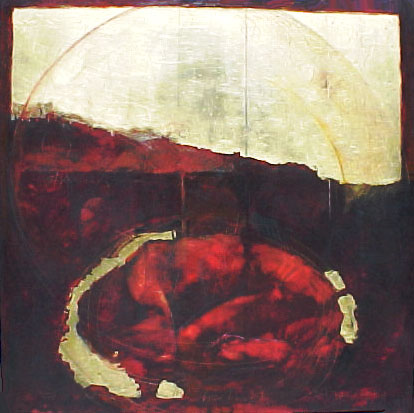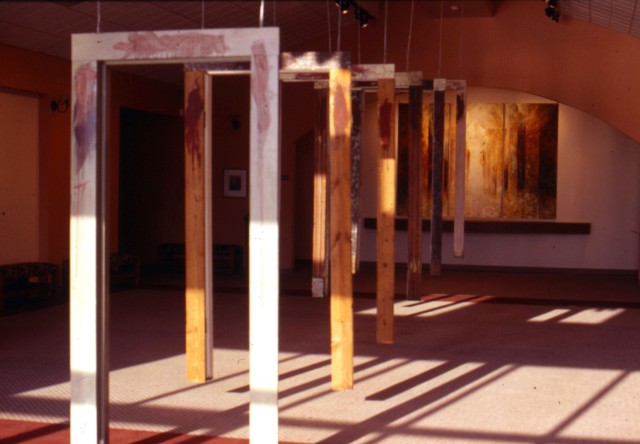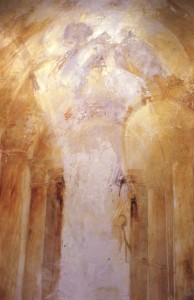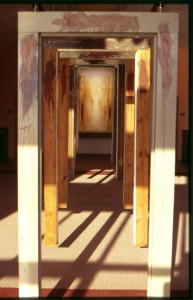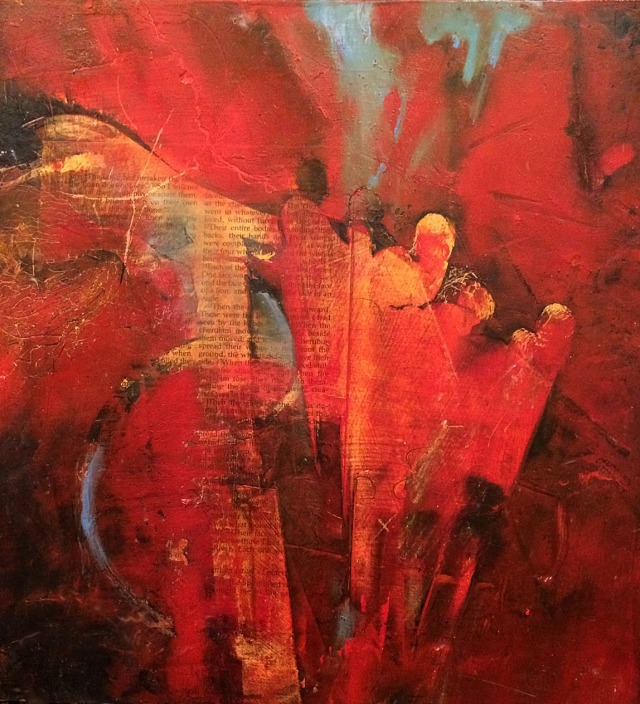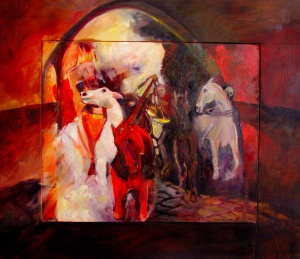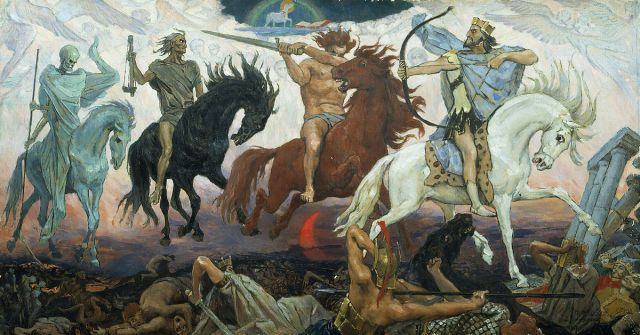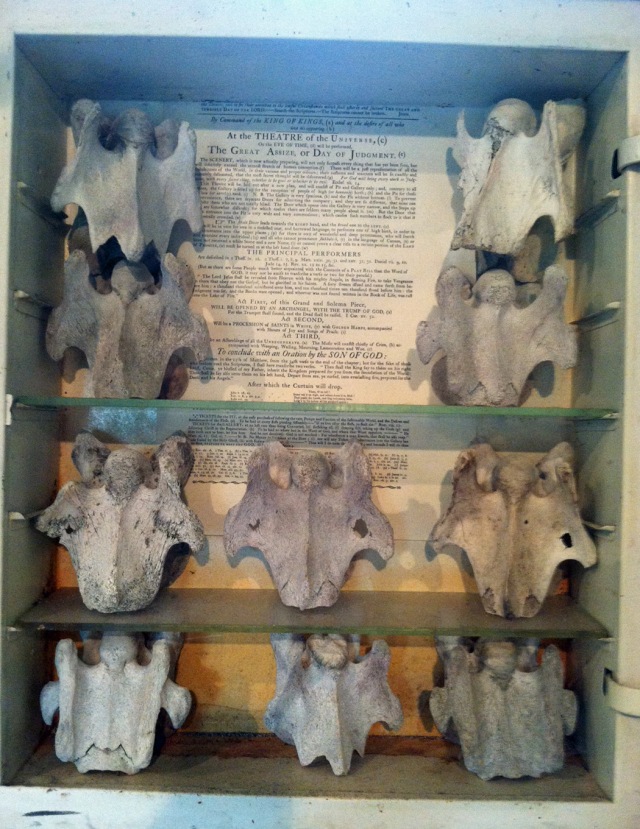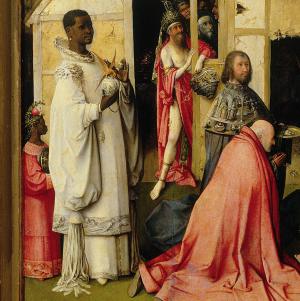 Last year when I was about to begin a large commission called The Fisherman, I received an email from this sweet lady who had found my studio on the River Arts District website. She wrote, My father passed away a number of years ago and left from his tools of the trade – boxes of gold (as well as composition gold made from copper and zinc and aluminum and silver leaf as well as his daggers, burnishers, and brushes). My brother was going to throw them out but I took them thinking that they would be of use for someone. . . . I went on the internet and googled for artists in the Asheville area. Spotted a short description of the artwork you produce and with religious themes I felt this was the right avenue to pursue since my dad and grandfather did work in churches back in Ohio.
Last year when I was about to begin a large commission called The Fisherman, I received an email from this sweet lady who had found my studio on the River Arts District website. She wrote, My father passed away a number of years ago and left from his tools of the trade – boxes of gold (as well as composition gold made from copper and zinc and aluminum and silver leaf as well as his daggers, burnishers, and brushes). My brother was going to throw them out but I took them thinking that they would be of use for someone. . . . I went on the internet and googled for artists in the Asheville area. Spotted a short description of the artwork you produce and with religious themes I felt this was the right avenue to pursue since my dad and grandfather did work in churches back in Ohio.
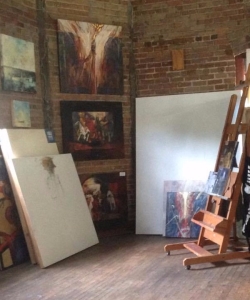
What perfect timing! I already had a specified 60 x 76 inch surface constructed — three panels bolted together vertically — like an altar piece with The Fisherman on the central panel. The commission was to be abstract with The Fisherman overseeing the scene below — his fishermen drawing in their nets. The clients were familiar with my work since they had purchased a painting called One Who Came On The Waters of Time / The Fisherman and had also commissioned a piece for their wine cellar, Water into Wine/The Wedding Feast Miracle . But they needed a large painting for their Florida residence — a focal point of faith in their home. We talked extensively. I received relevant fabric swatches, which inspired me to order powdered mineral pigments like malachite, azurite, and chrysocolla to compliment their colors and the ocean near their Naples home.
However, I had not expected the divinely sent “gift of gold”! How would I best utilize it, since my painting method is a process of layering paint? Would I hide the gold beneath the layers of paint? This layering process did in fact influence my decision to save the 23K gold-leaf for surface application and I would use the composition gold, an alloy of copper and zinc, beneath the wax and oils. (Composition gold would tarnish to a brown-green over time, actually adding to the colors of the sea. But cold wax medium that I mix with my oils has damar resin in it, which acts as a protective varnish. Even cold wax medium alone can be used as a final layer. I tell my clients that for extra protection, after a piece has dried for about six months, an additional UV varnish can be applied if they choose to do so.)
In the ancient suitcase of leaf were other metals used by her father — metals like silver and aluminum leaf. Rather that using the supply of silver leaf which tarnishes to black, I used the aluminum leaf as the ground surrounding the gold-leafed figure of the Fisherman. This foundational figure with resurrection arms raised would be calling and sending his fishermen. Also the fact that The Fisherman would be mostly hidden beneath the subsequent layers of paint and wax became an appropriate metaphor for the sovereign Fisher-King who works his ways of effectual calling mysteriously “behind the scenes,”
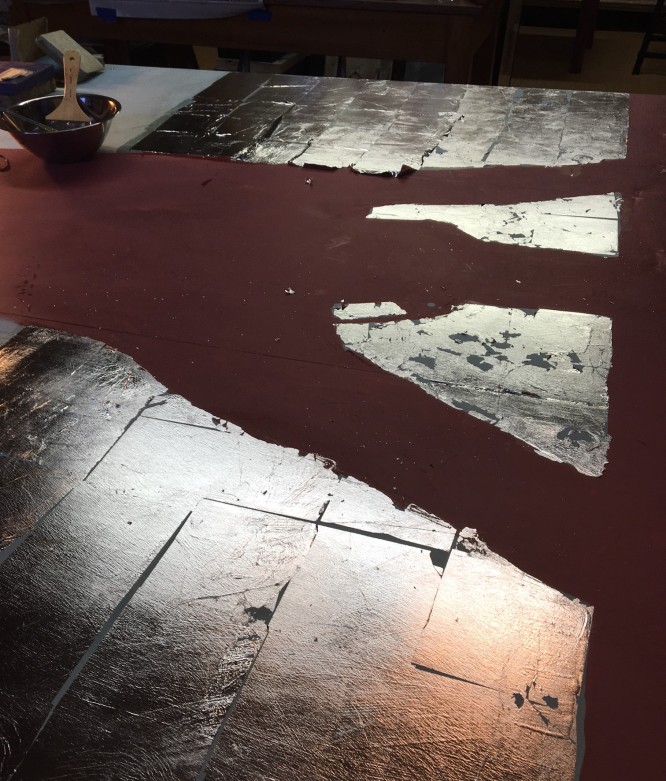
I researched water-gilding, the process of applying leaf which is so fragile and hammered so thin that the slightest air movement makes application difficult.
 The figure-ground would be painted with two different colors of bole, a clay based paint.
The figure-ground would be painted with two different colors of bole, a clay based paint.
I chose a blue for the aluminum leaf and deep red for the gold. These colors would show through the unevenly applied leaf to become part of the overall composition. As the red bole appeared through the tears and rips in the leaf, it reminded me of Christ’s sacrifice and the color of grace.
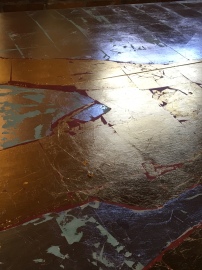
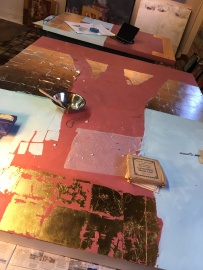
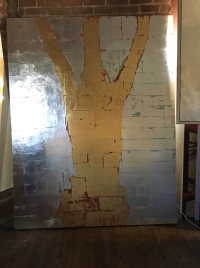
Then the layering of paint and wax could begin! I covered both figure and ground with colors of the sea and began to develop the fishermen at the bottom of the painting. I allowed the gold and silver to become integral to the composition by scraping off the surface layers before they dried. I also inscribed lines that reminded me of my The Nets of God Series and the boat shape which was thematic in my Vessel Series. The large Fisherman held his nets in the heavens as the small fishermen drew nets into their vessel below.

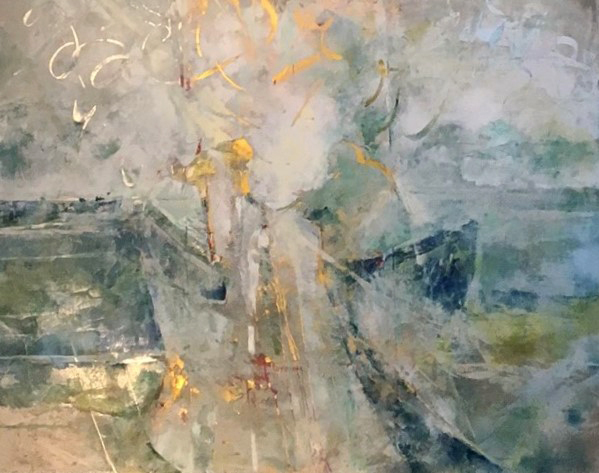
While the paint and wax were soft and pliable, I also made marks suggesting speech and Word of God. I incorporated automatic writing suggesting joy and song and later deliberate mark-making as in the Hebrew text השיחה (the call) under the face of The Fisherman inscribed when the paint and wax were drier.


Capturing the mystery of the face of God was a challenge. Nothing sentimental or trite would do for The Fisherman, whose sovereign rule spoke the world into existence and who dwells in unfathomable mystery. The Hebrew text הדייג in his diadem reads The Fisherman.
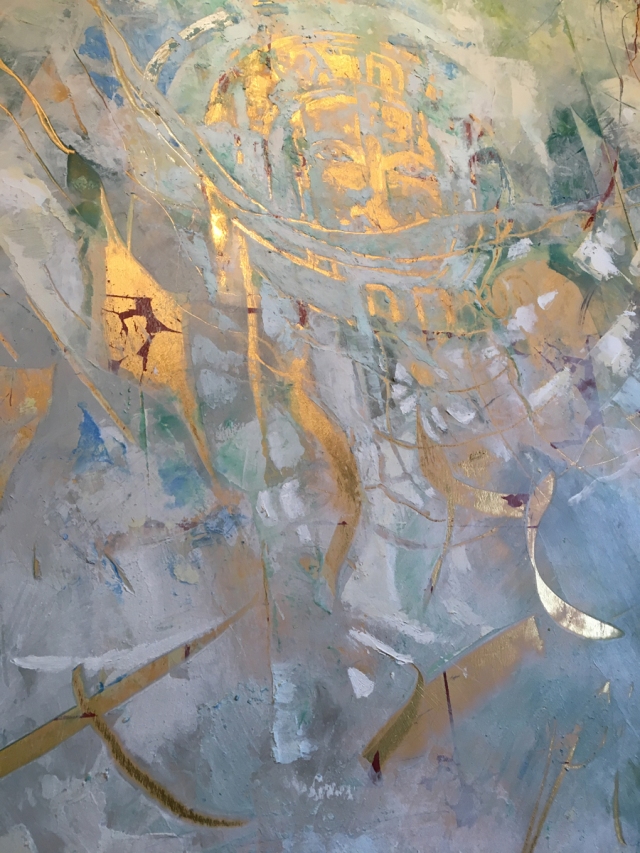
Some of these details are difficult to see from far or if the light is not reflecting on the gold leaf. This mystery adds to the glory and transcendence of the GOD and Creator of all things including faith! “For it is by grace you have been saved, through faith, and this is not your own doing; it is the gift of God” (Ephesians 2).
The clients are happy that The Fisherman will be overseeing the gathering of many friends and guests who visit their home! The “gift of gold” was indeed a timely gift of grace.
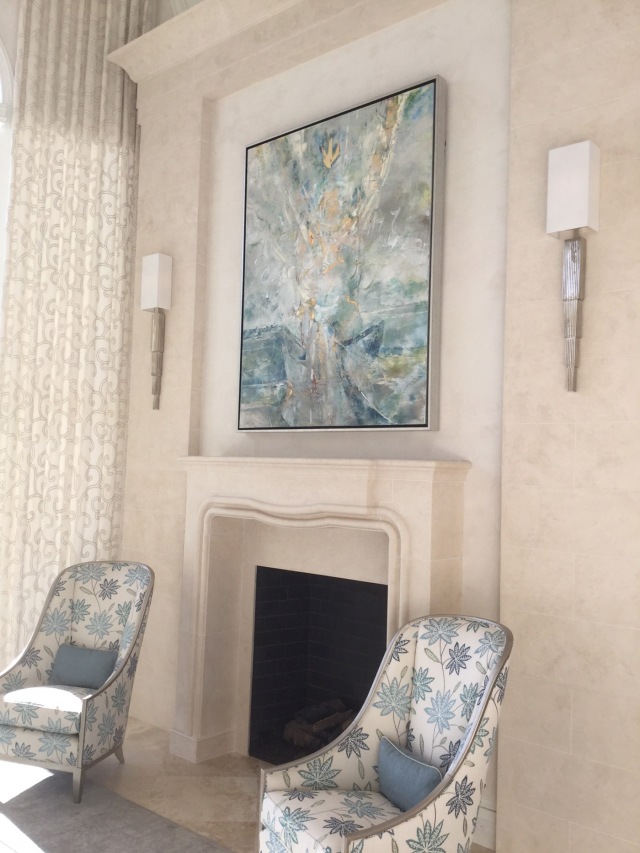
It has taken me all year to write about this first painting using my “gift of gold.” I hope to write about the rich metaphor and mystery in the commission that preceded this commission, The Wedding Feast / Jesus’ First Miracle. It will have to wait, as I am currently working on another miracle, The Miracle of the Five Loaves and Two Fish!
In 2017, I also painted The Return of the Prodigal, and The Gardener, using gold leaf as the foundation.
Happy New year — 2018 — from Soli Deo Gloria Studio.



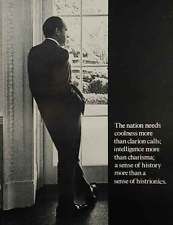 I was assigned the Nixon/McGovern race of 1972 (the Nixon poster called for “a sense of history, not histrionics”), and historical also because my own Christian faith believes all of history is a story with a divine plot and the post-Fall battle for power.
I was assigned the Nixon/McGovern race of 1972 (the Nixon poster called for “a sense of history, not histrionics”), and historical also because my own Christian faith believes all of history is a story with a divine plot and the post-Fall battle for power.
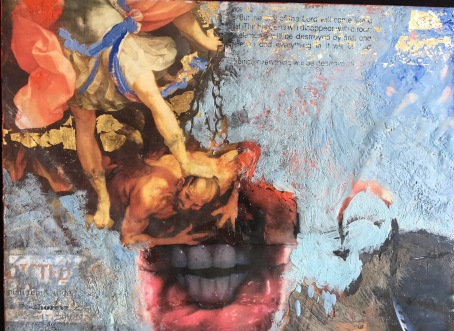
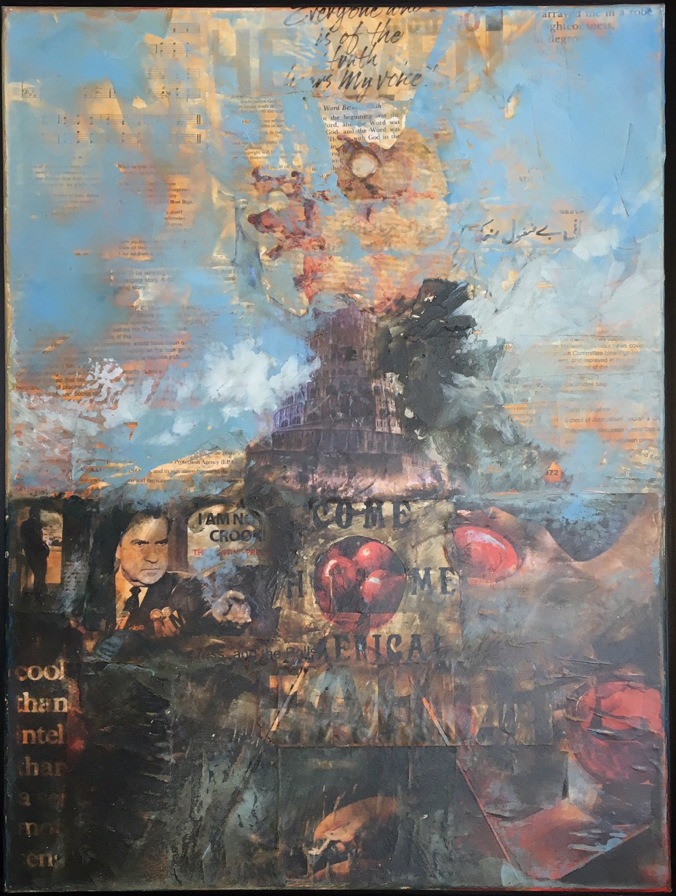
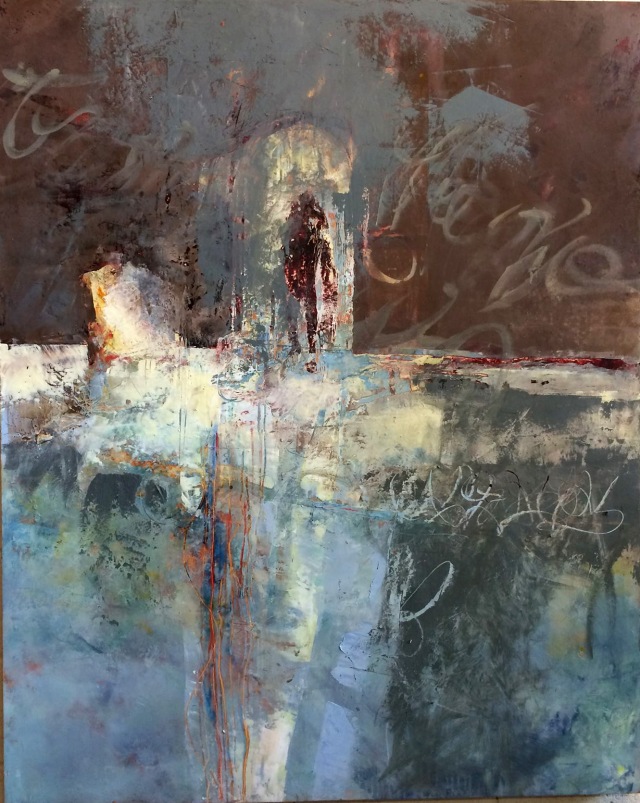
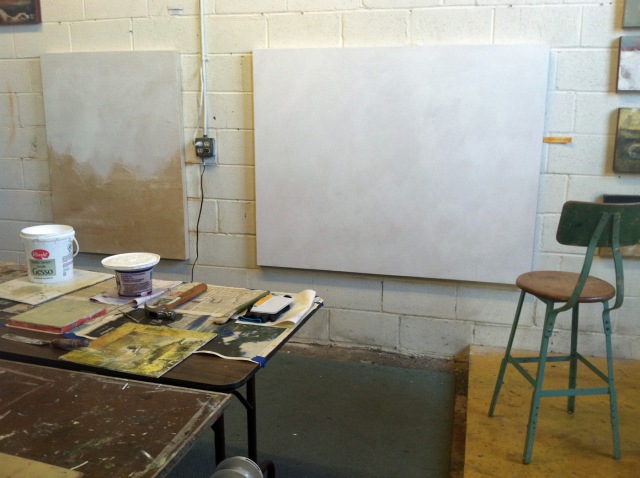
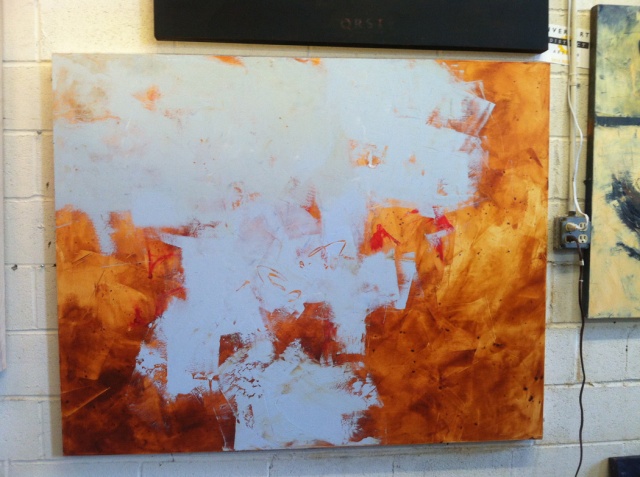
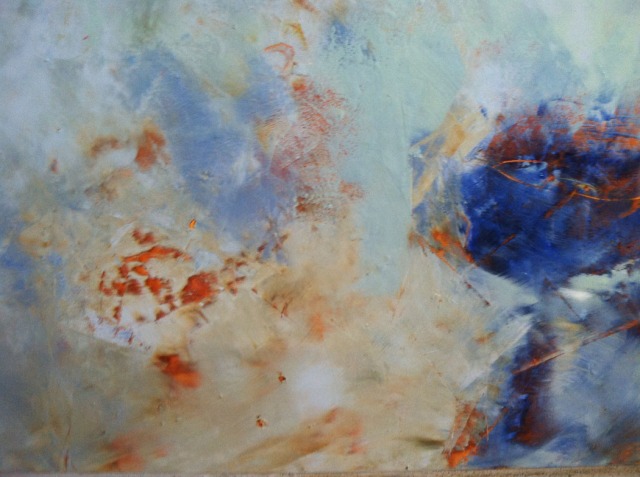
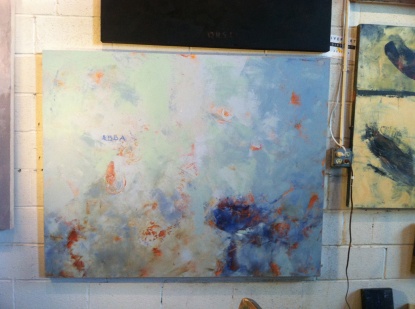 This Hebrew word, abba, was hidden in subsequent layers.
This Hebrew word, abba, was hidden in subsequent layers.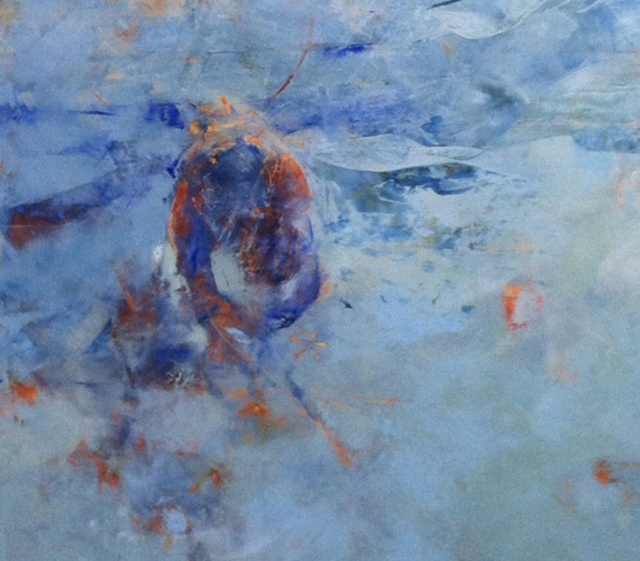
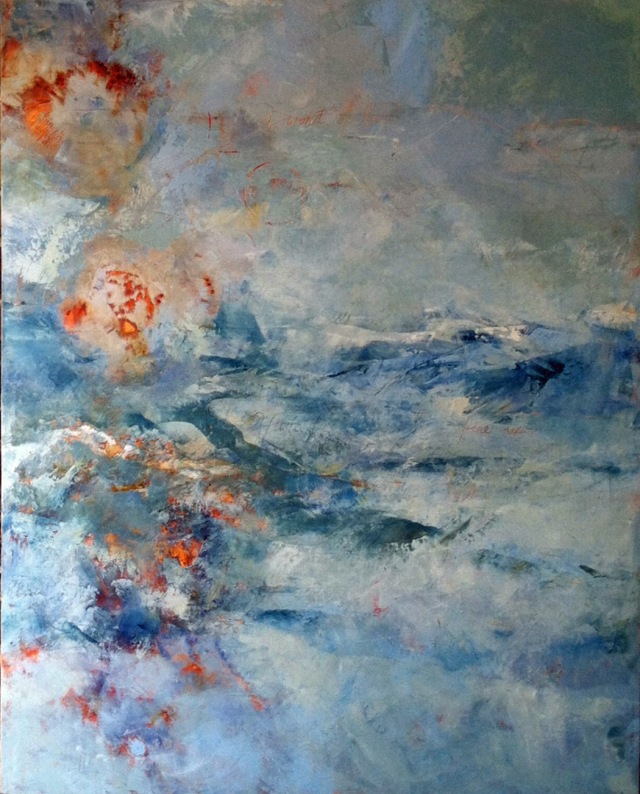
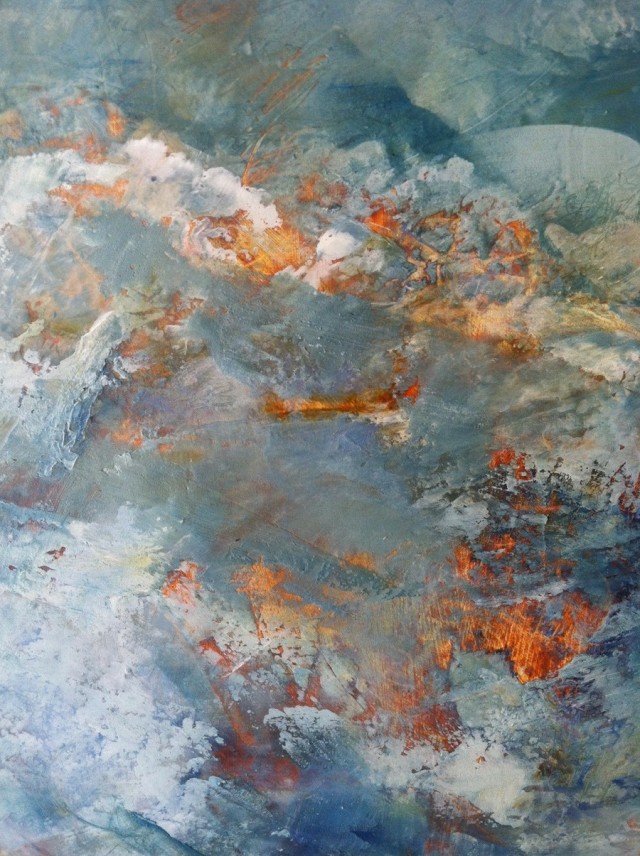





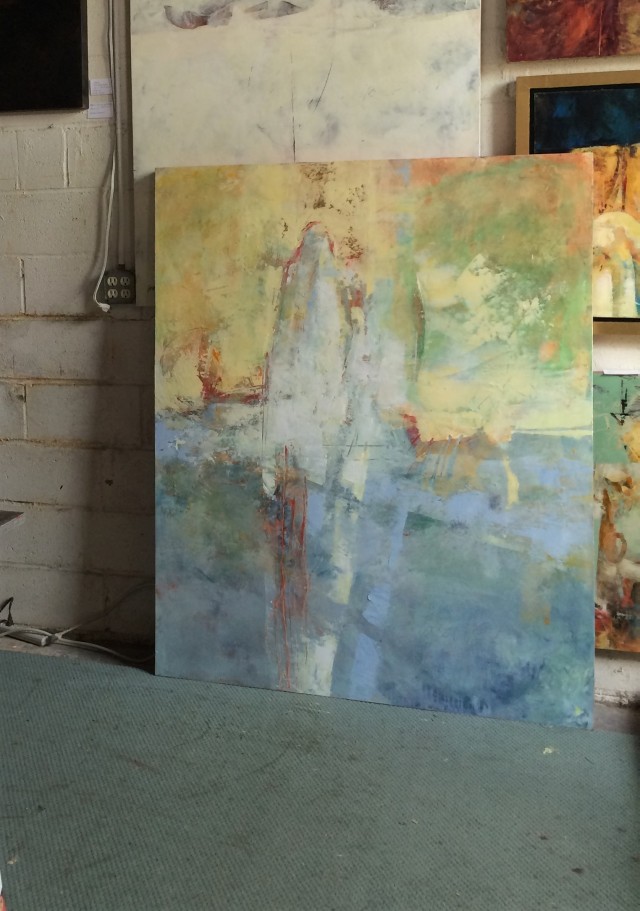
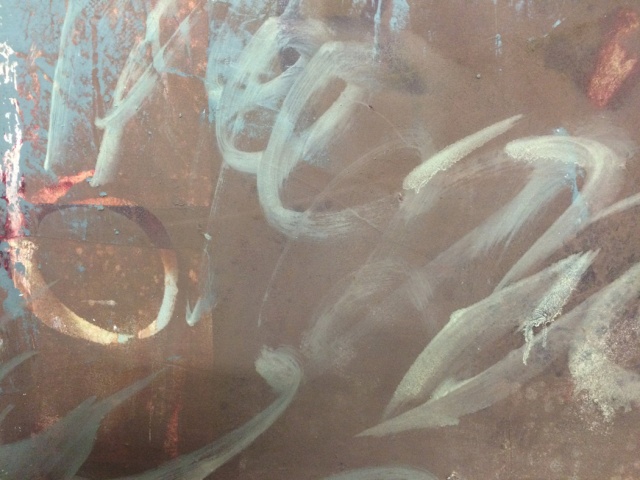


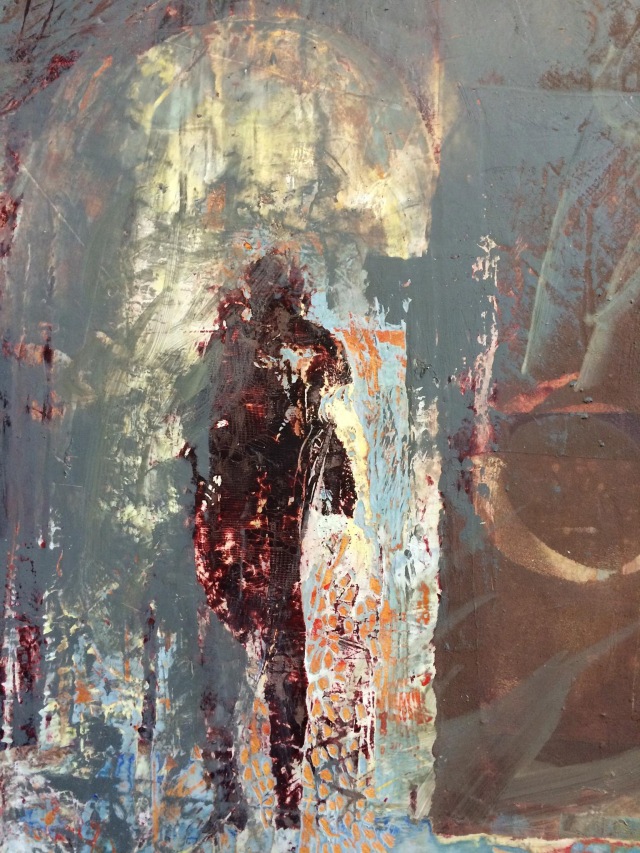
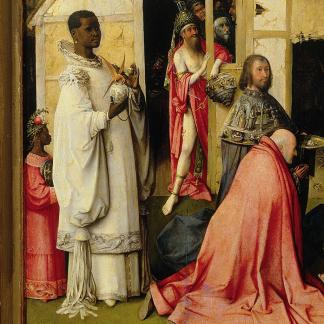


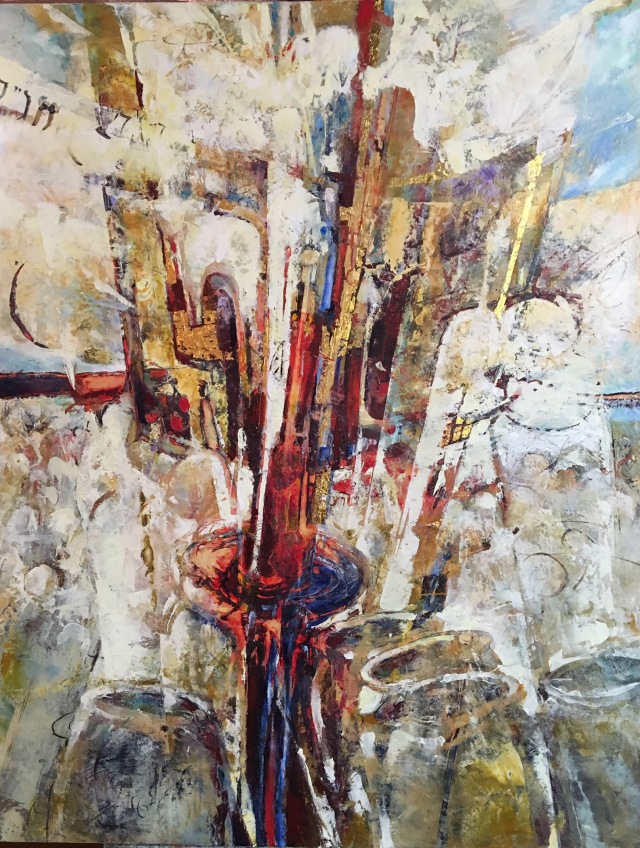
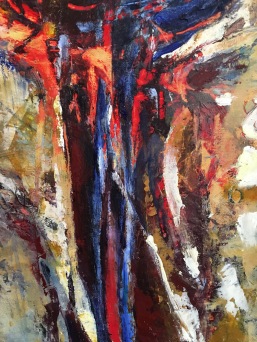
 This crux of the first miracle is Jesus’ own blood sacrificed for sin that makes celebration in heaven possible. You may be able to see his thorn-crowned head in the red central stem of a chalice connecting heaven and earth. Christ is looking down on his mother Mary’s face in the base of the chalice.
This crux of the first miracle is Jesus’ own blood sacrificed for sin that makes celebration in heaven possible. You may be able to see his thorn-crowned head in the red central stem of a chalice connecting heaven and earth. Christ is looking down on his mother Mary’s face in the base of the chalice.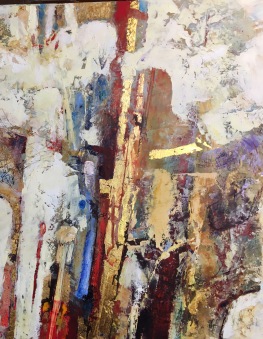
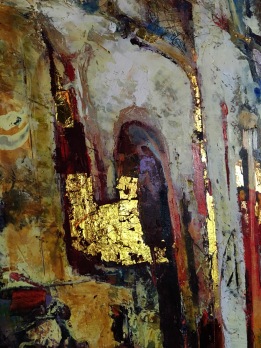 At the top of the chalice (the top of the painting) is the figure of the Bride dressed in embroidered garments meeting her Lover, and on the left side The Lamb of God stands on a golden throne.
At the top of the chalice (the top of the painting) is the figure of the Bride dressed in embroidered garments meeting her Lover, and on the left side The Lamb of God stands on a golden throne.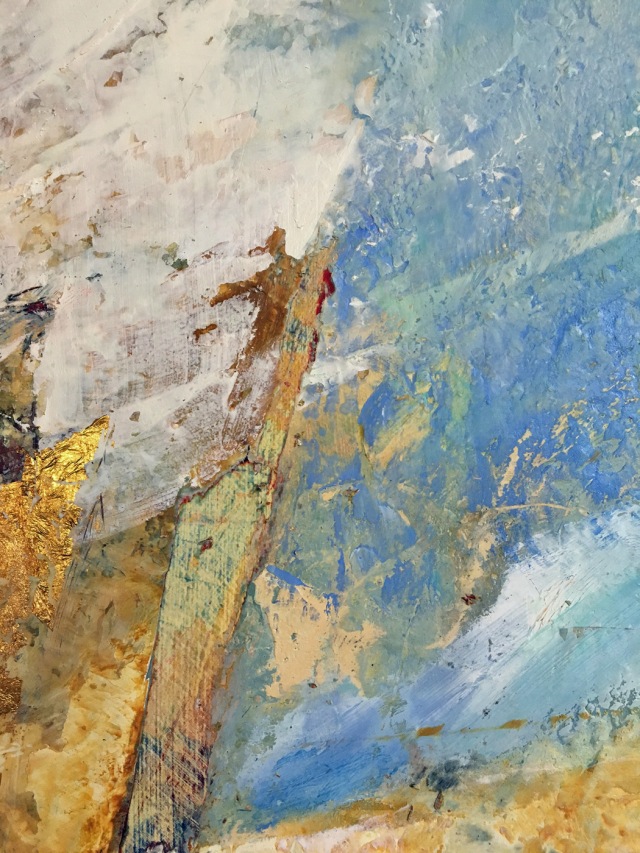
 I will miss the artists at
I will miss the artists at 